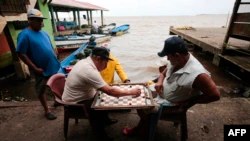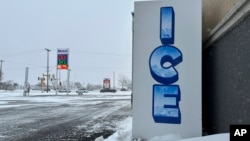The center of Tropical Storm Bonnie crossed Nicaragua on Saturday and was advancing over the Pacific to the northwest, leaving in its wake some fallen trees and detached roofs from houses in the south of the country, but without causing victims or serious damage.
The United States National Hurricane Center (NHC, for its acronym in English and based in Miami) reported that Bonnie’s eye made landfall on Friday night in a sector of the border with Costa Rica. On Saturday morning, the eye of the meteor was in the sea, about 100 kilometers south of the Nicaraguan capital and with winds of 65 kilometers per hour and stronger gusts.
In the Nicaraguan province of Rivas, neighbors reported falling trees and minor damage to homes. The government of President Daniel Ortega decreed a yellow alert on Friday throughout the national territory. No fatalities or missing persons were reported from the storm.
Bonnie is forecast to move into the Pacific on Saturday and then begin to intensify, likely reaching hurricane strength on Monday.
the state media Digital 19from Nicaragua, reported that brigades were visiting the impacted sites to “account for the damage,” but did not offer any other details.
Residents of the city of Bluefields, on the Atlantic coast, reported temporary cuts in the drinking water service in some coastal neighborhoods, but no major damage or flooding was reported and the sun shone again on Saturday morning.
The NHC reported that Bonnie will continue to generate heavy rains on Saturday in some regions of Nicaragua and Costa Rica. It will advance parallel to the coasts of El Salvador, Guatemala and southern Mexico until Tuesday.
Likewise, the storm is expected to strengthen in the next 48 hours and then become a hurricane.
The National Commission for Risk Prevention and Emergency Attention of Costa Rica reported on its Twitter account that 3,536 people were taken to 54 shelters in prevention due to Bonnie’s progress.
Both the Nicaraguan and Costa Rican governments suspended their tropical storm warnings and warnings for the Caribbean coast.
Many of Bluefields’ 57,000 residents began boarding up their windows in preparation for the storm. Many Nicaraguans still remember Hurricane Joan, which caused enormous damage to the Atlantic coast in 1988 and left almost 150 dead.
“We are already waiting for the impact of the storm, and praying that it does not destroy our region,” he told the AP Ricardo Gómez, who was 8 years old when Joan passed by.
The area was also hit in a short time by the powerful hurricanes Iota and Eta, in 2020, which caused damage estimated at 700 million dollars.
Concern in Costa Rica, classes are canceled
The National Commission for Risk Prevention and Emergency Attention of Costa Rica, reported on Saturday that the Emergency Operations Center holds a virtual work session early with officials of the agency that remains in the territories.
Costa Rican authorities have set up seven shelters for some 700 people displaced by the floods and there were concerns that the storm could trigger landslides and flooding in an area that has seen a lot of rain in recent days.
Media reported that a large landslide interrupted traffic a week ago on the main highway that connects the capital, San José, with the Caribbean coast, and it was still closed on Friday. The government canceled classes across the country.
Heavy rains have also destroyed or damaged several bridges.
A tropical storm warning was in effect for the island of San Andrés in Colombia, and from Cabo Blanco in Costa Rica north to Puerto Sandino in Nicaragua.
The US National Hurricane Center forecasts that Bonnie will resurface in the Pacific on Saturday, where it could gain intensity as it moves through the sea almost parallel to the coast during the following days.
The rains began on Monday, but according to meteorological criteria, until Friday it was not classified as a tropical storm Bonnie.
[Con información de Reuters y AP]
Connect with the Voice of America! Subscribe to our channel Youtube and turn on notifications, or follow us on social media: Facebook, Twitter and Instagram.















Add Comment